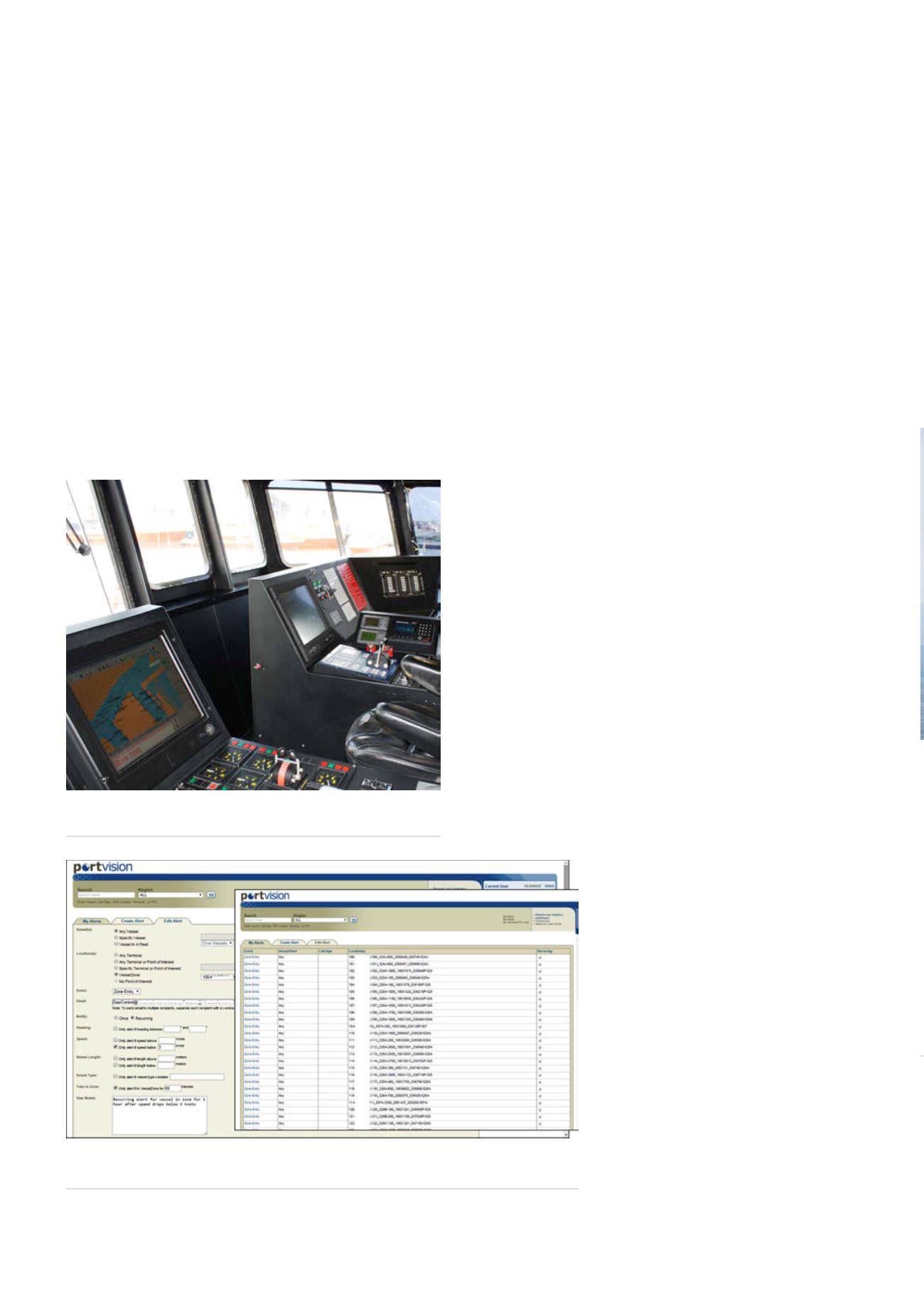
equipment configuration, there may be visual and/or audible
variations in how the AIS safety alert is received.
“Pipeline protection is increasingly important, with the typical
incident costing an average of at least US$1 million to repair,
not counting the incalculable costs of injury or death,” said Ed
Landgraf with Shell, and Director of CAMO. “This AIS-based safety
broadcasting system makes it easier for mariners to know where
and when to take protective measures as they transit or operate
near submerged pipelines, and we look forward to a successful
roll-out here and in other ports nationwide.”
Other ways to protect assets with AIS data
AIS-based vessel tracking tools are also being used by numerous
oil companies, as a means of improving their pipeline and asset
protection programmes. One example is Kinetica Partners LLC,
which operates approximately 1600 miles of pipe serving products
in and near the Gulf of Mexico. The company is using these tools
to optimise planning and implementation decisions. It also has
incorporated AIS data into its risk-based inspection activities.
Kinetica’s programme focuses on assets in approximately 50
locations where water is less than 15 ft deep and there is a greater
risk of exposed pipeline or navigation hazards. Roughly 90% of
these locations are in remote areas that are typically inspected
via helicopter. These fly-overs cost an average US$3000 each,
yet provide only a snapshot in time – not adequate for assessing
long-term vessel traffic patterns and associated risk. Budget was
wasted on fly-overs where there were low traffic volumes, and
Kinetica was also concerned it was not focusing enough attention
on higher risk locations.
With access to AIS vessel-tracking data, Kinetica now has both
real time and historical information to inform resource-allocation
decisions. The integration of AIS and other data has revealed
that, in some cases, certain threat risk levels are acceptable, giving
Kinetica the confidence to reduce inspection frequency and vessel
notification parameters and re-direct resources.
Kinetica also takes advantage of historical AIS data to analyse
and optimise notification parameters for the most effective
pipeline threat monitoring and management. There is the future
opportunity to also receive alerts when pipeline segments hit
traffic thresholds, triggering a look at inspection and notification
policy changes. Another use for historical data is to provide insight
into specific vessels and fleets that appear to regularly operate
near assets – this too can influence awareness and prevention
efforts.
Analytics based on historical data can also be used to
influence decisions about permitting and whether to seek
an emergency coastal zone permit for a location with high
vessel traffic. The data can also be used to analyse notification
procedures, and determine whether the standard USCG ‘notice
to mariners’ is adequate or if there should be a different mode
of stakeholder communication. AIS analytics can also influence
regulatory compliance, training, and where to install new pipelines
based on historical vessel traffic patterns.
Additionally, historical AIS data is often one of the first
sources of information to corroborate that an incident has
occurred in the absence of eyewitnesses. An example is when an
operator’s pipeline flow monitoring system reports a pressure
drop in a remote area – this could be a major rupture. AIS data
can be used to confirm the event, identify
the responsible vessel, help understand traffic
patterns, and both plan and launch optimal
response activities.
Latest USCG rules add new
asset protection opportunities
The US Coast Guard recently completed
the expansion of its Notice of Arrival (NOA)
regulatory requirements. The goal is to help
address threats to maritime transportation
safety and security by improving navigation
safety, enhancing the ability to identify
and track vessels, and heightening overall
maritime domain awareness (MDA). Among
other changes, the Final Rule (80 Fed. Reg.
5281), passed on 30 January 2015, expands
the applicability of both NOA and AIS
requirements to include more commercial
vessels.
Figure 1.
A wheelhouse receiving the AIS safety alert message
that they are in a pipeline area.
Figure 2.
An example of a PortVision report of real time alerts of pipeline
encroachments from AIS transmitting vessels.
58
World Pipelines
/
FEBRUARY 2016


